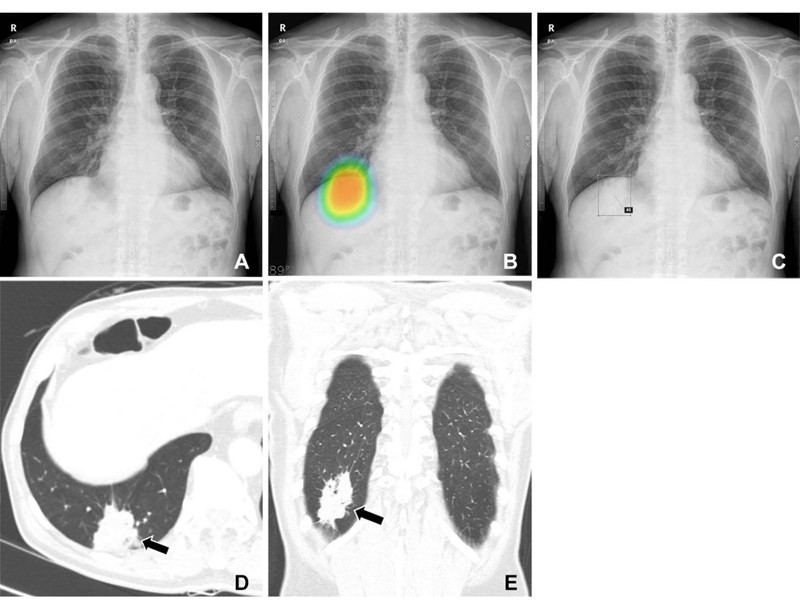Researchers at Seoul National University have looked at leveraging artificial intelligence (AI) tools to improve the detection of malignant lung nodules in chest X-rays.
AI algorithms could greatly improve the diagnostic accuracy in detecting lung cancers on chest X-rays and increased human acceptance of AI suggestions, according to a new study.
In order to analyse this performance, the Seoul National University team asked a group of radiologists to analyse X-rays with and without the help of an AI model.
The group of doctors consisted of 30 readers, including 20 thoracic radiologists with five to 18 years of experience and 10 radiology residents with only two to three years of experience. Of the 120 chest radiographs assessed, 60 were from lung cancer patients (32 males) and 60 were controls (36 males). Patients had a median age of 67 years.
The results showed that the use of high-accuracy AI improved readers’ detection performance to a greater extent than low-accuracy AI.

Chest X-rays obtained as part of a health checkup in a 71-year-old male patient / Radiological Society of North America
Image credit: Radiological Society of North America
“We think this issue of human trust in AI is what we observed in the susceptibility in this study: humans are more susceptible to AI when using high diagnostic performance AI,” said study lead author Chang Min Park.
Compared to the first reading session, readers assisted by the high diagnostic accuracy AI at the second reading session showed higher per-lesion sensitivity (0.63 versus 0.53), and specificity (0.94 versus 0.88). Alternatively, readers assisted by the low diagnostic accuracy AI at the second reading session did not show improvement between the two reading sessions for any of these measurements.
“Our study suggests that AI can help radiologists, but only when the AI’s diagnostic performance meets or exceeds that of the human reader,” Park said.
The scientists stressed that the results underline the importance of using high-diagnostic-performance AI. In the future, the researchers want to expand their work on human-AI collaboration to other abnormalities on chest X-rays and CT images.
The researchers’ findings have been published Radiology, a journal of the Radiological Society of North America.
Sign up to the E&T News e-mail to get great stories like this delivered to your inbox every day.




